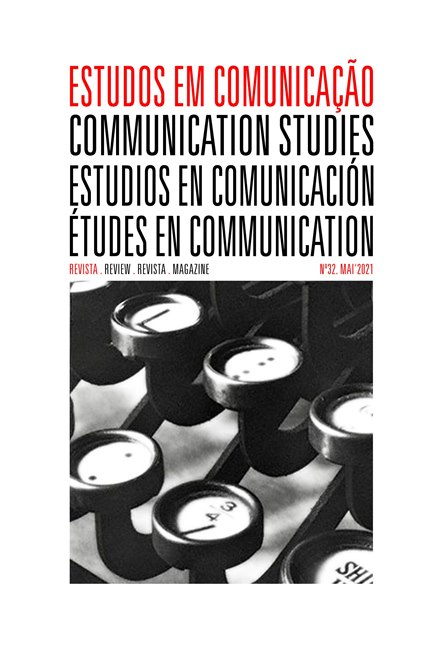State television news programmes in Spain in the days of Covid-19. Formal changes, treatment and content
Keywords:
television, information, Covid-19, Observatory, content analysis, SpainAbstract
Television has once again been the main source of information for Spaniards during the Covid-19 crisis. The purpose of our research is to determine through the study of a set of variables the formal changes, content and informational treatment of this crisis on television. In this research we compared the data obtained in previous waves of news analysis (4,511 pieces of 100 news reports) with those obtained in the wave of analysis coinciding with the explosion of the Covid-19 crisis in Spain (812 pieces of 17 news items) to try to identify the changes experienced by these. The orientation of news production in the first stage of the Covid-19 crisis has revolved around three axis: live information, development information and statements obtained through video calls. The Covid-19 news programs have been practically monothematic, longer, less structured, more spontaneous in their production and with a more direct and dialogical narration. These are news programs with a preferably national vision, in which expert sources and citizens have gained greater prominence, to the detriment of politicians.
References
Aparicio, D., Salgado, C., & Díaz-Arias, R. (2016). Los agentes informativos en los telediarios españoles. Resultados de Quién Habla y De Quién se Habla del otoño de 2013 al otoño de 2015 (13S2-15S). Universidad Complutense Madrid. https://eprints.ucm.es/38291/.
Bardin, L. (1986). El análisis de contenido. Akal.
Barlovento Comunicación (2020). Análisis mensual del comportamiento de la audiencia TV. Marzo 2020. www.barloventocomunicacion.es/wp-content/uploads/2020/04/barlovento-analisisaudiencias-tvmarzo2020.pdf.
Beder, S. (2004). Moulding and Manipulating the News. In R. White, Controversies in Environmental Sociology (pp. 204-220). Cambridge University Press.
Berelson, B. (1952). Content Analysis in Comunication Research. Free Press. Casero-Ripollés, A. (2020). Impact of Covid-19 on the media system. Communicative and democratic consequences of news consumption during the outbreak. El profesional de la información, 29(2), e290223. https://doi.org/10.3145/epi.2020.mar.23.
CIS (2017). Estudio nº 3195. Barómetro de noviembre de 2017. Centro de Investigaciones Sociológicas. www.cis.es/cis/export/sites/default/-Archivos/Marginales/3180_3199/3195/es3195mar.pdf.
CIS (2019). Macrobarómetro de octubre 2019. Centro de Investigaciones Sociológicas. www.cis.es/cis/opencms/ES/9_Prensa/Noticias/2019/prensa0440.html.
CIS (2020). Estudio nº 3277. Barómetro de marzo de 2020. Centro de Investigaciones Sociológicas. http://www.cis.es/cis/export/sites/default/-Archivos/Marginales/3260_3279/3277/es3277mar.pdf.
Costa-Sánchez, C., & López-García, X. (2020). Comunicación y crisis del coronavirus en España. Primeras lecciones. El profesional de la información, 29(3), e290304. https://doi.org/10.3145/epi.2020.may.04.
Dader, J. L. (2007). Del periodista pasible, la obviedad informativa y otras confusiones en el Estanco de noticias. Estudio sobre el mensaje periodístico, (13), 31-53. https://revistas.ucm.es/index.php/ESMP/article/view/ESMP0707110031A.
Díaz-Arias, R. (2000). La libertad de programación en radiodifusión. Un desarrollo del art. 20 de la Constitución Española [Tesis Doctoral inédita]. Universidad Complutense de Madrid.
Díaz-Arias, R. (2006). La primera edición del telediario de TVE, un clásico de éxito. In A. Vega, Muestra del panorama actual sobre los contenidos en la radio y la televisión españolas. UCM.
Díaz-Arias, R., González-Conde, J., & Aparicio, D. (2015). Parámetros de calidad de la información en televisión. La metodología del Observatorio de Calidad de la Información en Televisión. Ámbitos. Revista Internacional de Comunicación, (30). https://eprints.ucm.es/34758/.
Fernández del Moral, J. (Ed.) (2007). El análisis de la información televisiva: hacia una medida de la calidad periodística. Dosat.
Galtung, J., & Ruge, M. (1965). The Structure of Foreign News. Journal of peace research, 2(1), 64-91. https://doi.org/10.1177/002234336500200104.
Holsti, O. (1969). Content analysis for the social sciences and humanities. Addison Wesley.
K.U. Leuven-ICRI, Central European University-CMCS, Jönköping International Business School-MMTC, & Ernst & Young Consultancy Belgium (2009). Independent Study on Indicators for Media Pluralism in the Member States – Towards a Risk-Based Approach. Katholieke Universiteit Leuven. http://ec.europa.eu/information_society/media_taskforce/doc/pluralism/pfr_report.pdf.
Igartua, J., & Humanes, M. (2004, abril 29). El método científico aplicado a la investigación en comunicación social. Aula abierta. Lecciones básicas 2 – Portal de la Comunicación. Portal Comunicación. www.portalcomunicacion.com/download/6.pdf.
Martín, E. (1963). El análisis de contenido. Revista de estudios políticos, (132), 45-64. https://dialnet.unirioja.es/servlet/articulo?codigo=2047530.
Masip, P., Aran-Ramspott, S., Ruiz-Caballero, C., Suau, J., Almenar, E., & Puertas-Graell, D. (2020). Consumo informativo y cobertura mediática durante el confinamiento por el Covid-19: sobreinformación, sesgo ideológico y sensacionalismo. El profesional de la información, 29(3). https://doi.org/10.3145/epi.2020.may.12.
Moreno, Á., Fuentes-Lara, C., & Navarro, C. (2020). Covid-19 communication management in Spain: Exploring the effect of information-seeking behavior and message reception in public’s evaluation. El profesional de la información, 29(4). https://doi.org/10.3145/epi.2020.jul.02.
Newman, N., Fletcher, R., Kalogeropoulos, A., & Kleis Nielsen, R. (2019). Reuters Institute digital news report 2019. Reuters Institute for the Study of Journalism. www.digitalnewsreport.org.
Sparks, C., & Tulloch, J. (Eds.) (2000). Tabloid tales: global debates over media standards. Rowman and Littlefield.
Zeller, C. (2001). Los medios y la formación de la voz en una sociedad democrática. Anàlisi: quaderns de comunicació i cultura, (26), 121-144. https://dialnet.unirioja.es/servlet/articulo?codigo=72414&orden=14574&info=link.
Downloads
Published
Issue
Section
License
Estudos em Comunicação/Communication Studies is an Open Access journal. All its content is freely available without charge to the user or his institution. Users are allowed to read, download, copy, distribute, print, search, or link to the full texts of the articles in this journal without asking prior permission from the publisher or the author. Estudos em Comunicação, by Labcom, is licensed under a Creative Commons Atribuição-NãoComercial-SemDerivações 3.0 Unported License. By submitting your work to Estudos em Comunicação/Communication studies you confirm you are the author and own the copyright, that the content is original and previously unpublished, and that you agree to the licensing terms.


